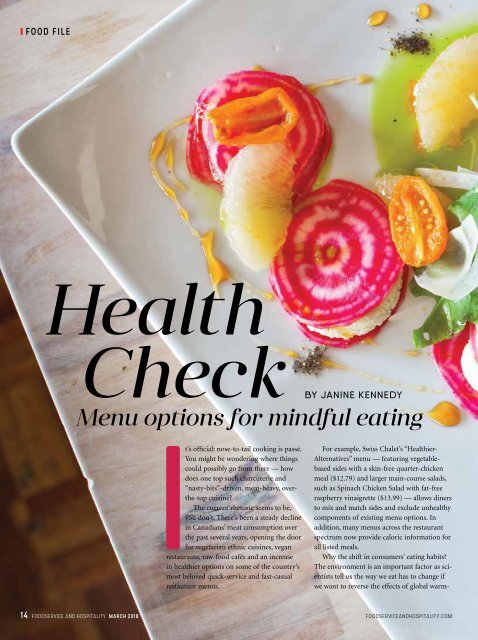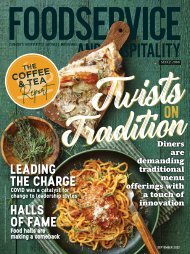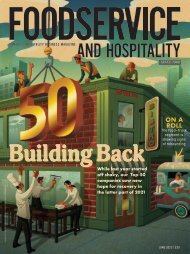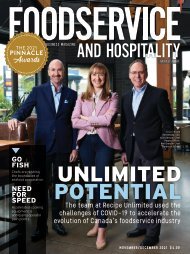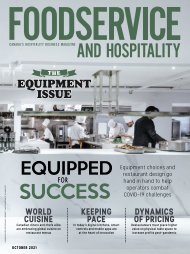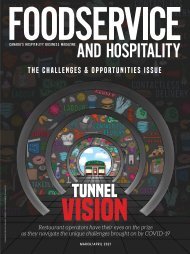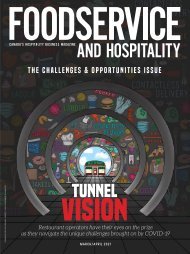March 2018 Digital Issue
You also want an ePaper? Increase the reach of your titles
YUMPU automatically turns print PDFs into web optimized ePapers that Google loves.
FOOD FILE<br />
BY JANINE KENNEDY<br />
It’s official: nose-to-tail cooking is passé.<br />
You might be wondering where things<br />
could possibly go from there — how<br />
does one top such charcuterie and<br />
“nasty-bits”-driven, meat-heavy, overthe-top<br />
cuisine?<br />
The current rhetoric seems to be,<br />
you don’t. There’s been a steady decline<br />
in Canadians’ meat consumption over<br />
the past several years, opening the door<br />
for vegetarian ethnic cuisines, vegan<br />
restaurants, raw-food cafés and an increase<br />
in healthier options on some of the country’s<br />
most beloved quick-service and fast-casual<br />
restaurant menus.<br />
For example, Swiss Chalet’s “Healthier-<br />
Alternatives” menu — featuring vegetablebased<br />
sides with a skin-free quarter-chicken<br />
meal ($12.79) and larger main-course salads,<br />
such as Spinach Chicken Salad with fat-free<br />
raspberry vinaigrette ($13.99) — allows diners<br />
to mix and match sides and exclude unhealthy<br />
components of existing menu options. In<br />
addition, many menus across the restaurant<br />
spectrum now provide caloric information for<br />
all listed meals.<br />
Why the shift in consumers’ eating habits?<br />
The environment is an important factor as scientists<br />
tell us the way we eat has to change if<br />
we want to reverse the effects of global warm-<br />
14 FOODSERVICE AND HOSPITALITY MARCH <strong>2018</strong> FOODSERVICEANDHOSPITALITY.COM


